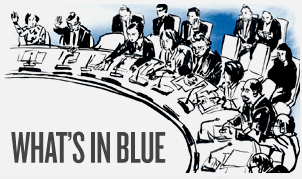Statement by Karin Landgren, Executive Director, Security Council Report at the Security Council Open Debate on Working Methods
Mr President,
Thank you for inviting Security Council Report to address this open debate on working methods. SCR extends our appreciation to Japan as Council President and as the Chair of the Informal Working Group on Documentation and Other Procedural Questions.
Security Council Report has, as an independent and impartial think tank, published five reports on Council working methods, and has worked closely with some fifty incoming Council members, to date, in line with our aim of supporting the Council’s transparency, effectiveness and accountability.
In the New Agenda for Peace, the Secretary-General describes conflict prevention as a high priority, but “chronically underprioritized”. Establishing the facts, and understanding their context, is a critical part of conflict prevention. Agreeing on a set of facts is notoriously hard. In one of the post-conflict countries where I had the privilege to serve as SRSG, local historians from opposing sides wanted to write their country’s history, together. But this sincere intention was thwarted by their inability to agree what exactly had happened to tear their country apart, and why.
This Council has many working methods that support receiving accurate and timely information, as well as for informal discussion. I will mention four approaches that the Council has already used, to good effect:
- greater use of UN Regional Offices,
- in-depth Secretariat briefings,
- informal meeting formats such as closed Arria-formula meetings and Informal Interactive Dialogues, and
- deepened engagement with regional organisations: in this regard I will also say more about the Council’s relationship with the AU Peace and Security Council.
UN regional offices are a prevention mechanism. Each of the three regional offices briefs the Council twice a year, in the Chamber, in consultations, or both. It is nonetheless a limited engagement. The Council last visited UNOWAS eight years ago, in March 2016 , as part of its visiting mission to Mali, Guinea Bissau and Senegal. When the Council visited the CAR in March 2015, they heard a briefing by the UNOCA SRSG, but it doesn’t appear that the Council has ever visited UNOCA or UNRCCA.
Also in the spirit of conflict prevention, the Council has previously sought regular in-depth briefings by the UN Secretariat. These varied from political briefings given by (then) DPA, to more holistic reviews of fragile situations, and even a daily briefing. Some Council members would like to have the Secretariat once again provide more analysis in closed, informal settings.
You are very familiar with informal Council meeting formats such as the Informal Interactive Dialogue. The Arria-formula meeting format has risked becoming tarnished as it moved away from not-for-attribution information to the televised trading of jibes. More recently, some members have taken the Arria-formula meetings back behind closed doors, and even offsite.
Mr President,
As far back as the 2005 World Summit Outcome, Council members agreed to “expand consultation and cooperation with regional and subregional organisations, including by inviting relevant organisations to participate in the Council’s public and private meetings, when appropriate”. At times the Council has used private or closed formats for engagement with regional organisations, such as last year’s high-level Informal Interactive Dialogue with the League of Arab States.
With last December’s Resolution 2719 on the financing of AU-led peace support operations, engagement with the AU seems poised to shift into higher gear.
Resolution 2719 notes the need to enhance and align UN and AU efforts to address security challenges in Africa. Some of the actions it calls for are for the two secretariats, and the AU and the UN have dedicated offices here and in Addis Ababa that can coordinate to this end. But the resolution underscores the Council’s primary responsibility for the maintenance of international peace and security, as well as for oversight of the AU PSOs it authorizes. For Resolution 2719 to be effective, surely the Councils will need to design a new and much closer way of working together.
With the AUPSC, the UNSC has its most developed partner relationship. Since these annual consultative meetings began in 2007, an informal session has been added, and experts now travel to New York or Addis beforehand to negotiate the draft outcome. But these meetings of the two Security Councils are not yet a forum for candid, strategic or even routine exchange. With a shared interest in preventing conflict, and also knowing how hard it can be to maintain political support for peace operations, there is a strong case for the Councils to hold more frequent, more interactive and less scripted, meetings. The blueprint for doing this hasn’t yet been written. Perhaps it could be the topic of a retreat of the two Councils during this year’s annual meeting. Such a retreat might also consider modalities for joint visiting missions, which have long been agreed in principle.
Let me acknowledge the Ad Hoc Working Group on Conflict Prevention in Africa, which is well positioned to play a role in strengthening the relationship between the Councils.
In deepening its ties with the AUPSC, the Council may also be charting a path towards developing more strategic, informal dialogue with other regional peace and security bodies.
Mr President,
This brings me to my final point, namely the Council’s contact with the field. Article 34 of the Charter gives the Council a privileged role to investigate matters—in fact, any matter which “might lead to international friction or give rise to a dispute”: the Charter’s language here is very broad. Members often find field visits “eye-opening”, but the Council’s field travel still remains far from its pre-COVID levels.
The 2019 Note by the president on Security Council visiting missions underlines that SC members agree on the importance of conducting missions within a conflict prevention framework, to countries or regions with developing crises. In March 2017 the Council went to Cameroon, Chad, Niger and Nigeria, a fact-finding mission that its co-leads the UK, France and Senegal described as intended to bring more attention to the crisis created by Boko Haram and to improve its own understanding of the humanitarian situation and the root causes of the violence. In October that year, the Council’s trip to Mali included a visit to the G5 Sahel Joint Force, at a time when the Council was actively considering options for UN support to that entity.
In addition to incorporating visits to UN regional offices, on such trips the Council could consider revisiting countries whose missions have undergone transitions, to draw lessons from these, including on preventing conflict recurrence, as it last did in February 2019, visiting Côte d’Ivoire and also, while there, being briefed by the UN Resident Coordinator in Liberia.
The 2019 Note encourages sending smaller groups of Council members on mission, and dispatching joint missions with regional and subregional organisations where appropriate. Small mission formats confer flexibility as well as savings. In the past, the Council has deployed anywhere from a single PR to travel on its behalf to sending half a dozen ambassadors. The Note encourages closer coordination of travel among the Council, subsidiary bodies, and the Secretariat. Subsidiary body chairs brief the Council on their trips, as has the chair of Working Group on Children and Armed Conflict and the Informal Expert Group on Women, Peace and Security.
In closing, Mr President, the profound geopolitical tensions of these times make it vital that the Council stay abreast of situations that may lead to international friction or give rise to disputes. Note 507 has done much to advance better working methods. And as past chairs of the IWG have underlined, working methods can do a great deal to help make the Council more effective, including seeking to reduce polarization within the Council and to strengthen common ground.
Thank you.

